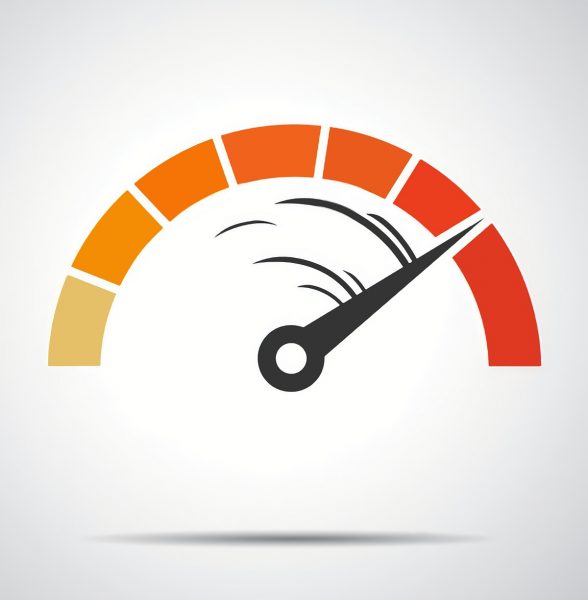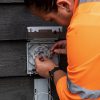Ookla Sees AltNets Creeping Up on Big UK Broadband ISPs

The latest data from Ookla, which operates the popular Speedtest.net website, is beginning to show the sort of impact that the new generation of alternative full fibre broadband networks (AltNets) are having across the UK. But for now, the seven largest ISPs still dominate the country’s fixed broadband market.
At present around 70% of UK premises can already access a gigabit-capable broadband connection (via any fixed line technology) and that drops to around 40% when only looking at Fibre-to-the-Premises (FTTP) networks. Major operators like Openreach (8 million premises) and Virgin Media (15.6 million premises) account for the lion’s share of that gigabit coverage.
However, today’s market is also awash with over a hundred different AltNets (e.g. Hyperoptic, CityFibre, G.Network, CommunityFibre, Gigaclear, Netomnia and many more), all of which are deploying their own full fibre (FTTP/B) networks. According to the Independent Networks Co-operative Association, such networks grew their UK coverage by 111% in 2021 to cover 5.46 million premises (here), and they’ll probably double that in 2022.
Advertisement
The latest Speedtest Intelligence® data from Ookla shows that AltNets are starting to have an impact due to rising take-up. But for now, the established networks and ISPs still dominate due to better coverage. Overall, the UK’s median broadband download speed in the first half of 2022 was 61.69Mbps (17.63Mbps upload).
Northern Ireland, thanks in part to its superior FTTP coverage (upwards of 85%), ranked first for median download speeds on 65.21Mbps (18.67Mbps upload), followed by England on 62.40Mbps (17.65Mbps), Scotland at 57.13Mbps (17.35Mbps) and Wales on 49.71Mbps (15.98Mbps).
Across the 146 British counties Ookla looked at, the data showed that Virgin Media (VMO2) had the fastest median download speeds in a whopping 71% of those. BT ranked a distant second, posting the top speeds in just 10% of counties, while Vodafone led in 5 counties. Fibrus and Gigaclear both registered the top speeds in 4 counties each, with Truespeed leading in 2 counties. Various other providers led in 1 county.
The reason for this is simply due to the lack of gigabit coverage and associated take-up by consumers from the new AltNets, which are playing catch-up with the two largest networks. VMO2’s big advantage on this front is their existing Hybrid Fibre Coax (HFC) network, which was only recently upgraded to handle 1Gbps+ speeds (upload speeds remain somewhat hobbled by their legacy network).
Advertisement


Ookla also said they would have expected some markets, such as the UK, to transition to fibre more swiftly and provide users with faster median download speeds, but this hasn’t happened. We suspect that may partly reflect the fact that consumer awareness of the new services has not kept pace with the rapid increase in coverage, while other people may still be locked into existing contracts, hold no desire for faster speeds or be nervous about switching.
At the same time, it’s worth remembering that not everybody wants to take a gigabit service from Virgin Media, which is a closed network platform with a limited choice and flexibility of service features. But if you take VMO2 away from the equation, then FTTP coverage by other operators is currently just 40%, thus there’s still a long way to go before competitive network coverage by full fibre operators has matured.
Advertisement
One catch with this data is also that some of the largest AltNets, such as CityFibre, actually operate a wholesale platform – selling services via several ISPs. But this makes it harder to grasp the impact of their network when looking at ISP level results, since customers are likely to be more widely distributed and some of the ISPs they serve also sell packages via rival networks (e.g. TalkTalk and Vodafone both sell ‘some’ Cityfibre and Openreach based plans).
Finally, Ookla also looked at GDP and Purchasing Power Parities (PPP) in 2021 across 160 markets to see if there was a correlation between wealth and internet speeds. But the correlation between fixed broadband speed and wealth was found to be “weak“.
Mark is a professional technology writer, IT consultant and computer engineer from Dorset (England), he also founded ISPreview in 1999 and enjoys analysing the latest telecoms and broadband developments. Find me on X (Twitter), Mastodon, Facebook, BlueSky, Threads.net and Linkedin.
« ISP Giganet Expand UK Full Fibre Rollout to 2 Wiltshire Towns
Wireless Broadband Firms Curvalux UK and CBNG Have Merged »






















































People make these tests mainly when they have issues with their internet connection so this also can indicate the worst ISP.
Most of the people I know do speedtests as routine, myself included, just to keep an eye on their connections or out of curiosity. Naturally, you also test when there are problems, but it’s wise to keep track of performance – problems or not.
But in any case, I wouldn’t say there’s necessarily a noticeable difference in testing trends/reasons between the providers.
btw Mark, why comments under “ISP Andrews and Arnold Boosts UK Broadband Data Allowances” are disabled? Is it to prevent people mocking those so 00’s guys?
I can’t think of the last time I had a speed issue to be honest. I have a Samknows box and get a report at the end of the month. Gigaclear btw.
Even when living in Cardiff Spectrum had no interest in me – no wonder they are so low down they turn custom away.